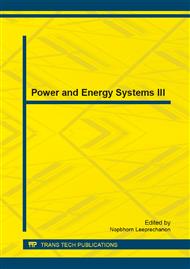p.392
p.397
p.407
p.412
p.418
p.426
p.431
p.439
p.443
An Advanced Modeling and Control Approach for Frequency Regulation in Electric Energy Systems with New Resources
Abstract:
This paper concerns the problem of regulating the frequencies of the evolving electric energy systems. The currently implemented frequency regulation approach is found unable to relieve the impact of the increasingly integrated variable sources such as renewable power plants and price responsive loads. Even several key underlying assumptions of this approach are not likely to hold in this situation. In this paper we propose an enhanced frequency regulation approach by differentiating units participating in frequency regulation both with respect to their location and ability to respond. This approach models the governorturbine-generator dynamics of each individual generator and develops a linearized model of the interconnected power system. Moreover, the singular perturbation technique is employed to reduce the unnecessary complexity of the linear system and simplify the control design. An optimal feedback control law is then designed based on the reduced order model via Linear Quadratic Regulator method. Comparative simulations on a 3bus test power system show the improved control performance obtained by the proposed approach.
Info:
Periodical:
Pages:
418-425
Citation:
Online since:
January 2014
Price:
Сopyright:
© 2014 Trans Tech Publications Ltd. All Rights Reserved
Share:
Citation:


